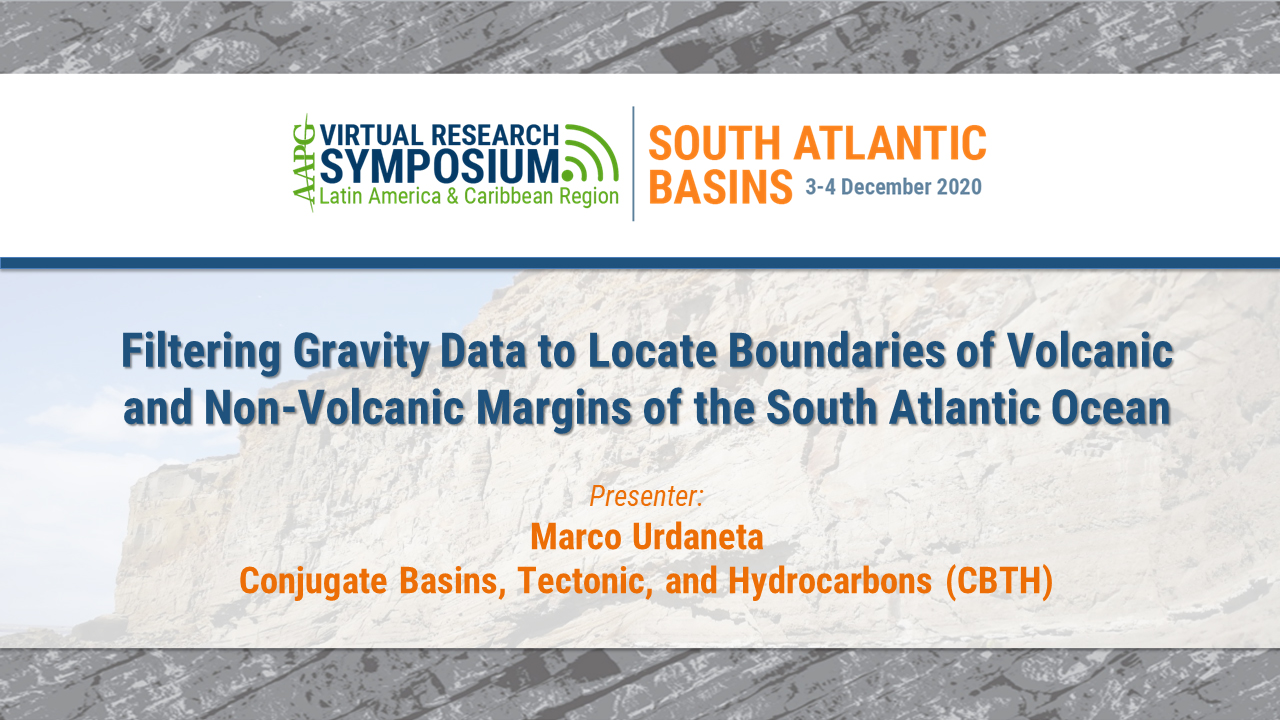
Summary
Authors: Marco Urdaneta (presenter), Sarah Meyer, Paul Mann, Conjugate Basins, Tectonic, and Hydrocarbons (CBTH)
Based on several decades of shelf, slope and deepwater exploration on the South Atlantic rifted-passive margins, volcanic rifted margins exhibit less hydrocarbon potential than non-volcanic ones because the massive volcanic events can bury or over mature source rocks formed during the rift phase. The primary characteristic of volcanic margins are seaward-dipping reflectors, or “SDRs”that are defined as seaward-inclined, packages of igneous crust that underlie the transition from continental to oceanic crust. On the conjugate margins of South America and west Africa, many previous deep-penetration, seismic reflection and refraction studies have shown SDR belts of Barremian-Aptian age range that width from 91 to 117 km and in thickness from 10 to 20 km. The composition of SDRs where known from deep drilling on analogous volcanic margins can vary with mixtures of stratiform, subaerial volcanic flows separated by volcaniclastic units and non-volcanic marine and non-marine sedimentary units. Due to heterogeneity of SDRs, the Bouguer anomaly alone is not revealing for their mapping at regional scales. In this presentation, we describe a new method of using the total horizontal gradient of the Bouguer gravity anomaly to detect the sloping or faulted edges of SDRs. We have applied this method to the conjugate margins of the Pelotas and Punta del Este basins of southern South Atlantic in southern Brazil and Uruguay and the Walvis, Luderitz, and Orange basins of Namibia in West Africa. We compare the results from the gravity method to a compilation of deep-penetration seismic data to resolve the updip, downdip margins of the volcanic and non-volcanic margins. Our gravity results predict well the edges of the volcanic margin with errors of 10-20 km. We also compare the gravity results to magnetic mapping which on its own is not diagnostic - but offers some support of the gravity results.
Bio:
b>Marco Urdaneta, Conjugate Basins, Tectonic, and Hydrocarbons (CBTH)
Marco is a Geology student at the University of Houston, where also works as Student Researcher at the CBTH Consortium, maintaining geological database and presenting research topic on SDR’s.
Please log in to view or purchase the video presentation